Shure SRH840 Review
Shure SRH840
Serious headphones that know how to have fun, and at the right price too.
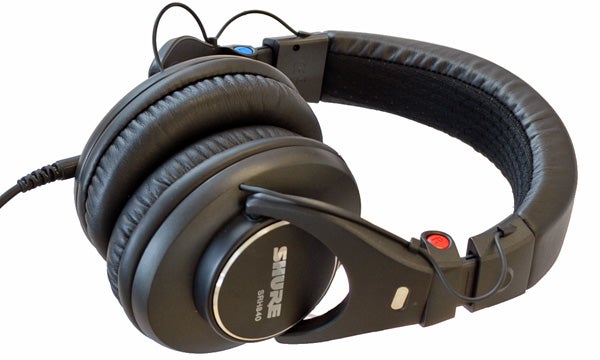
Verdict
Pros
- Excellent clarity
- Warmth adds sonic enjoyment
- Great value
Cons
- Not light
- Large
- Some design quirks
Key Specifications
- Review Price: £122.00
- Removable coiled cable
- Two pairs of pads included
- 3.5mm-to-6.3mm jack converter
- 40mm driver
Shure has been one of the kings of in-ear headphones for years, but it’s a relative newcomer to high-quality studio headphones. The Shure SRH840 are one rung down from the top-end SRH940 closed-back headphones, and sell for around £130. Designed for professionals rather than kids bopping along the road, will they sound as dull as elevator music for the sake of accuracy? In a word – no.
Related: More headphones for between £90 and £150
Design
The Shure SRH840 are over-ears headphones that encase your earlobes with foam-filled fake leather pads. Although they sound great plugged into a simple MP3 player – with 42Ohm impedance they’re not particularly difficult to drive – they are not intended for use out and about. They want to be kept indoors, preferably in a room where a mixing board packed with a dizzying array of knobs and faders lives.

How come? There are several reasons. They are not particularly light and, despite a fairly tight-clasping headband, will work their way off your head if you move around too quickly. The Shure SRH840 are also large. A traditional, non-bulbous design doesn’t make it immediately apparent, but they stick out a way from your head. Although by no means bad-looking headphones within their field, they will not make you look cool.
To add to the outdoors inconvenience, they use a tightly-coiled cable – it hangs a little heavily and is really meant for studio use rather than when you’re sat at home, plugged into a home cinema. Less trailing cable means less likelihood of tripping and taking a £1k compressor down with you.
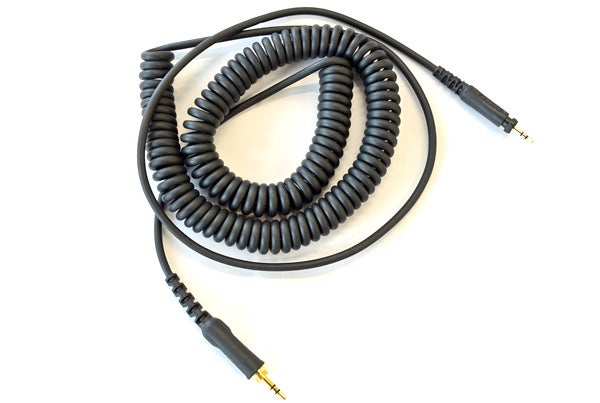
Viewed from the perspective of a studio engineer, they’re much more attractive. The SRH840 fold up across a plastic hinge at the top of each earcup, and the cups also swivel around 180 degrees, letting you easily listen to a single channel without the other interfering.
The cable is removable too, using a 2.5mm stereo connection and a twist-to-lock mechanism to stop them from being yanked-out accidentally. De-concertina the coiled cable and it stretches to 3m, and it features a screw-on 3.5mm to 6.35mm jack converter for maximum flexibility. Straight 3m replacement cables are available for under £20.
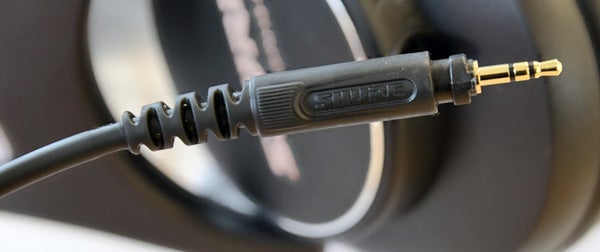
There’s one part of the SRH840 that seems curiously vulnerable for headphones that are otherwise heady-duty. Thin cables poke out of the earcup and snakes around into the headband on the outside. We assume this is to let the folding mechanism move freely without risking the cable, but it does leave you worried that a sharp snag could leave you with a useless pair of cans.
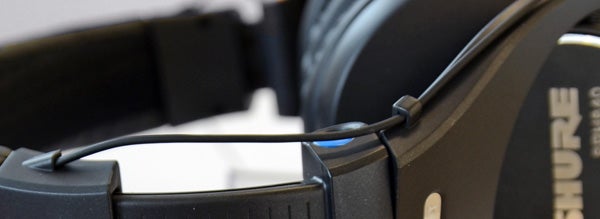
The one other hardware niggle is that the headband does apply slightly uneven pressure, with most of it on the very top of your head. As the part that makes contact is padded mesh rather than plastic – like some broadcaster headphones – it’s not downright uncomfortable, but is worth considering if you’re fussy about such things.
Like a home-worker typing out important emails in their pyjamas, a few aesthetic points clearly value function over form. Stickers on the headband indicating the left and right sides started to slip off during testing (and didn’t look great in the first place), and we’re not sure the red and blue indicators just above were really necessary either. With a single cable coming out of the left side – entirely standard for single-sided leads – it’s immediately obvious which side is which.
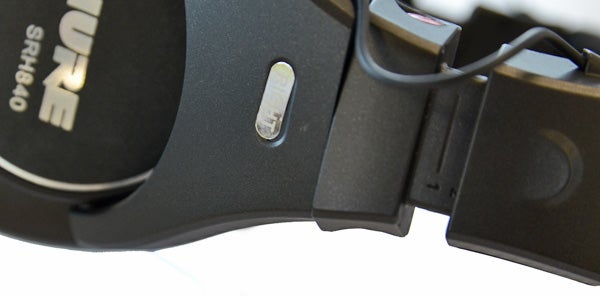
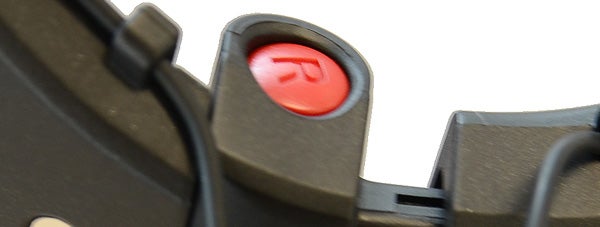
Alongside the headphones, cable and jack converter, Shure provides a basic plastic-leather case and a pair of extra slimline earpads that slightly reduce how far the headphones stick out from your head.
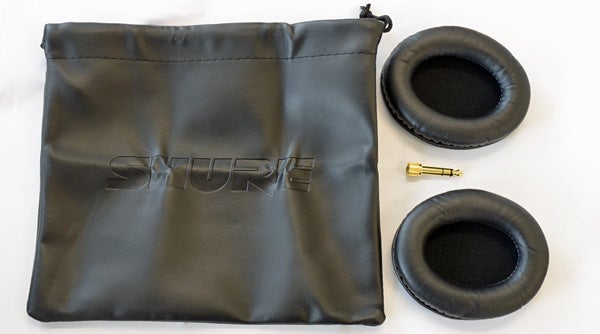
Continue reading for our thoughts on the Shure SRH840’s sound quality.
The Shure SRH840 are closed-back headphones, hugely reducing the amount of noise let in and let out – many pairs of “studio-grade” headphones use this design as it’s beneficial for monitoring. It’s not just this that helps block sound out, though. The material used in the pads is also very important.
Using velour pads is often preferable for comfort, reducing how much your ears are heated-up and getting rid of the slightly sticky feel of some fake leather. But they leak much more sound than the material here. The SRH840 do heat your ears up a tad, but the pads’ surfaces are soft, well-padded and comfortable.
Sound Quality
Striving for accuracy and detail, the Shure SRH840 are very clear-sounding, slightly bright-leaning headphones. They have a great top-end, which is both insightful and a little unforgiving at times. After a short burn-in, we found that it’s well-executed enough to avoid adding any extra sibilance to recordings. 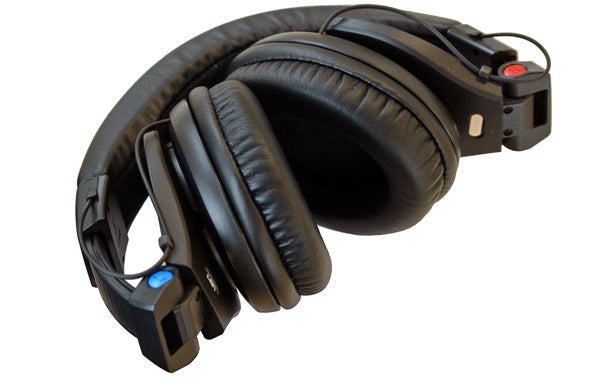
There is plenty of bass – slightly more than offered by an entirely neutral set – but it’s a little laid-back, lacking some of the impact of the last studio headphones tested, the GermanMAESTRO GMP 8.35. However, there’s a certain smoothness and openness to the SRH840 that makes them convincing as leisure headphones – for movies and music outside the home studio – rather than just monitors.
It’s the mid-range warmth, which characterises most of Shure’s SE IEMs, that makes them much more fun to listen to than many analytical headphones. It does step on the toes of the top-end transparency a little, but it’s a worthy trade when there’s plenty of open-ness to the top-end for analytical ears to grab onto. The soundstage is also good for a closed pair, although we imagine not a patch on the new open-back Shure SRH 1440.

The SRH840 are headphones with the requisite neutrality of a studio headphone and the smoother qualities of a home Hi-Fi headphone. They are the best of both worlds, but if you want a set simply for monitoring and zero “fun” applications, you might be better off without the tasty candy coating of warmth that the SRH840 provide. However, we know which type we’d rather live with.
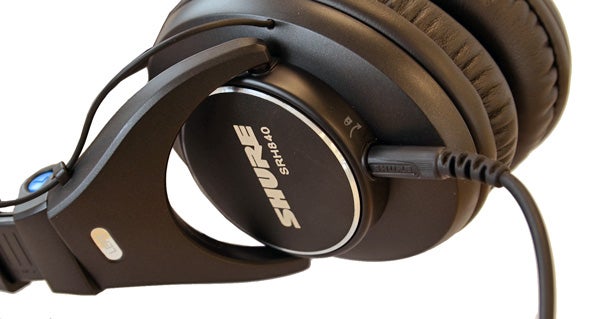
Value
Available for around £120 if you shop hard enough, the Shure SRH840 are excellent value, competing well with sub-£200 sets from Beyerdynamic, and in particular offering much more enjoyable sound than the classic £120 DT100. The folding, swivel-cup design also makes them significantly more versatile than many pairs of this size. We have some quibbles about a few design elements, but these are simply brilliant headphones for the money.
Verdict
The Shure SRH840 are excellent all-round home headphones that are superb value at £120-odd. Well-made, and with sound lets them switch between roles as a monitoring tool and more relaxed listening buddy with ease, they’re highly flexible as long as you keep them indoors – they’re just a bit too big for portable use in our book.
Trusted Score
Score in detail
-
Value 9
-
Design & Features 8
-
Sound Quality 9


